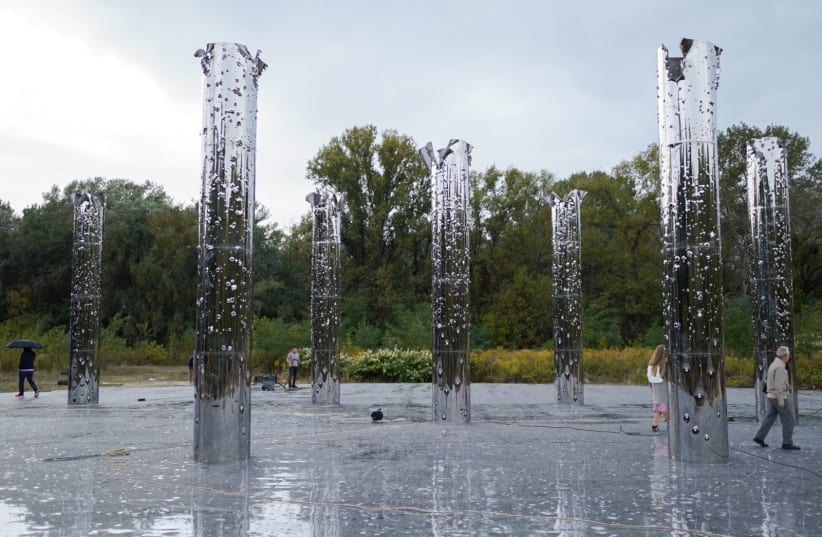Over the past 15 years, through my work with the International March of the Living, I have bound my personal and professional destiny with Holocaust education and commemoration as well as to the fight against antisemitism. As the organization’s spokesperson for many years and later as a member of March of the Living management, I was a firsthand witness to the extensive impact of Holocaust education and commemoration, on both Jews and non-Jews. A person visiting the ghettos, the towns, the synagogues and cultural institutions can visualize the rich Jewish atmosphere that was cut short. A person who sees the labor and extermination camps for himself, comes back a different person. We’ve seen it studies conducted by the organization throughout the years, where the participants noted, several years later, that it was a life altering experience and an event at which they undertook to remember and remind, to do all that they can to ensure that in never happens again, not to the Jewish people nor to any human being.
Poland is strewn with cemeteries and concentration camps built by the Germans, aiming annihilate the Jewish people in a methodical and, unfortunately, efficient manner of mass annihilation by gas. Auschwitz actually became the symbol of the Jewish Holocaust in Europe and the cynical and cruel gate reading “Arbeit Macht Frei” (Work sets you free) is the image etched into the collective conscious.
A little over a year ago, I received a call from Sana Britavsky, CEO of the Genesis Prize Foundation, and she said: “As a daughter of the Jewish people, Auschwitz is my symbol too. But being born in Ukraine, it is not my Holocaust story, nor that of a million other former-USSR Jews living in Israel. Nor is it the story of the 2.5 million Jews murdered in Eastern Europe. Our symbol is Babyn Yar."
Within 48 hours, essentially all of Kiev’s Jewry was obliterated in the Babyn Yar Massacre, known as the biggest mass massacre of the Holocaust, committed in the shortest period of time. Some 33,771 Jews, mainly women, children and the elderly, assembled near the Jewish cemetery by order of the Nazis just one day after they conquered the city. From there, they were taken to the Babyn Yar forest, stripped, lined up over the valley of death, murdered by gunfire and thrown in, covering the bodies of Jews murdered just seconds before them. Throughout the Nazi conquest, Babyn Yar continued to be a site of mass murder, a burial site for about 100,000 victims, mostly Jews – rendering Babyn Yar among the largest mass graves in Europe.
The story of the mass murders by gunfire and the mass graves was not a new one. It was mentioned in the history books, but public attention was never really focused on it, but rather on the German concentration camps in Poland, and the stories of the Eastern European Jews sent to their death in Poland were told extensively. The site at which 2.5 million Jews, 1.5 million in Ukraine alone, were murdered by gunfire, near their homes, and buried in thousands of mass graves throughout Eastern Europe – in Lithuania, Latvia, Romania, Belarus and Ukraine – never received worthy commemoration under the USSR regime or thereafter, and not without reason.
The Nazis began conquering the USSR and their eradication of the Jewish communities in 1941, going on for two years. When the Soviets liberated the area, and mainly after the war, Stalin implemented a policy prohibiting any mention of Jewish suffering during the war. To Stalin, it was millions of Soviet citizens who were killed in the great patriotic war, and the Holocaust could not be noted as a tragedy unique to the Jewish people. Natan Sharansky, currently chairperson of the Babyn Yar Holocaust Memorial Center, describes the Jewish Holocaust of Eastern Europe a double crime: the crime of Jewish destruction executed by the German Nazis and the crime of silencing and erasing the memory, committed by the USSR under Stalin.
Thus, for decades, the stories of the Eastern European Jews were not published as they were held deep in the archives of the communist states. It is just in the past three decades, as the USSR was dissolved and independent states were established in Eastern Europe, that unearthing of such events began.
In 1961, Poet Yevgeny Yevtushenko wrote that there is no monument and memorial at Babyn Yar. And indeed, there was no worthy monument there until this year. Many attempts to establish a significant museum to tell the story of the Jews of Kiev, Ukraine and Eastern Europe failed throughout the years, time and time again, until now. The Holocaust Memorial Center, whose establishment has been accelerated in the recent year, thanks to support from Ukraine President Volodymyr Zelensky, is now becoming a reality in Babyn Yar. The compound consists of a line of monuments, including a symbolic synagogue, and anyone walking the grounds hears the prayers and the names of the many victims. In addition, an academic council was opened, archives in Eastern Europe were opened up to Center historians and new studies are being conducted. The Center also conducts educational programs about the massacre, both in and outside of Ukraine.
An official memorial service will take place at the site next week in the presence of Ukrainian President Volodymyr Zelensky, Israel President Isaac Herzog and German President Walter Steinmeier. Now, we can finally say that, 80 years after the Babyn Yar Massacre, there is a monument and memorial.
The author is a member of management of the International March of the Living and a senior advisor to the Babyn Yar Holocaust Memorial Center and to the Combat Antisemitism Movement.
